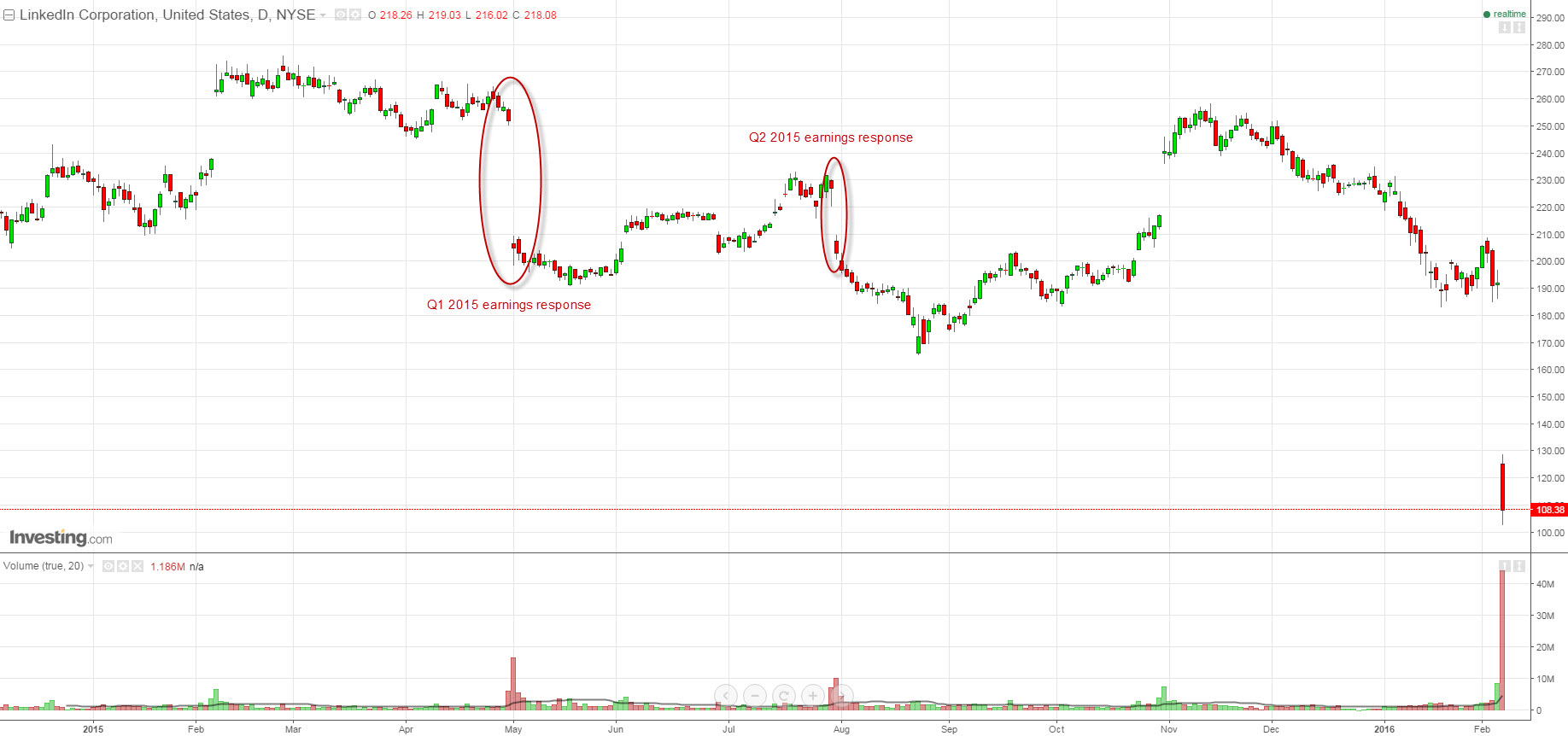by Clement Thibault
Shares of LinkedIn (N:LNKD) dropped over 43% on Friday, the biggest drop on record for the social media company. The loss in value following the fall is astounding—over $11B erased in total, with Chairman Reid Hoffman taking a massive $1.2B hit from his own personal fortune.
The selloff is largely a result of the expected slowdown in the company's growth—from 35% in 2015 to around 20% in 2016—which was announced during its Q4 '15 earnings report on Thursday, after the bell.
Though some are portraying this crash as unexpected, we believe there were clear signals indicating this could happen. If so, what were they?
1. Previous Behavior
Looking at this past year's chart, we see two major drops in the price of LinkedIn's stock. The first occurred during the week of April 26th, when the stock lost 21%. The second happened on the last day of July, when the stock lost 10.5%. Both drops occurred immediately following earnings reports. This shows that investors should have already known how volatile the stock can be following earnings reports, and that significant bad news would inevitably sink the stock yet again.

2. Hidden Liabilities
Only those capable of meticulous examination can generally plow through the camouflaged mess of information that is often dumped into annual reports, and few are able to unearth a company's true bottom line. Not many investors know that LinkedIn finances its locations and servers with off-balance-sheet debt. The company has hundreds of millions of dollars in future lease obligations, plus total Restricted Stock Units—future compensation for employees—of over $1 billion, according to page 115 of its 2014 annual report. The company's available cash is therefore much smaller than a glance at the balance sheet would suggest.
3. Overvaluation
What $200 would have bought you last Thursday, and what $108 can buy you right now is surprisingly little if it involves LinkedIn shares. You would own a share of a company with no P/E ratio, because its earnings have been negative for every quarter of 2015. Indeed, some companies reinvest all of their income, or are in a field where a few years in the negative are necessary in order to establish a viable revenue stream and are therefore valued according to expected growth rather than current earnings. But according to New constructs LLC, via Forbes, revenue growth for LNKD has been shrinking since 2011, as has growth in unique visitors, page views, and registered members. Clearly, the company can not sustain its growth, but that's been an open secret for years now.
Should LinkedIn drop further in value, it could become an acquisition target—most likely by Facebook (O:FB). This would not be bad at all for the company; Becoming part of a larger organization would allow it to reorganize and reset course in order to become profitable and grow.
For now, however, investors should keep an eye on the stock, but don't buy just yet. While it's considerably less risky than it was at $200, it's hardly a safe bet.
